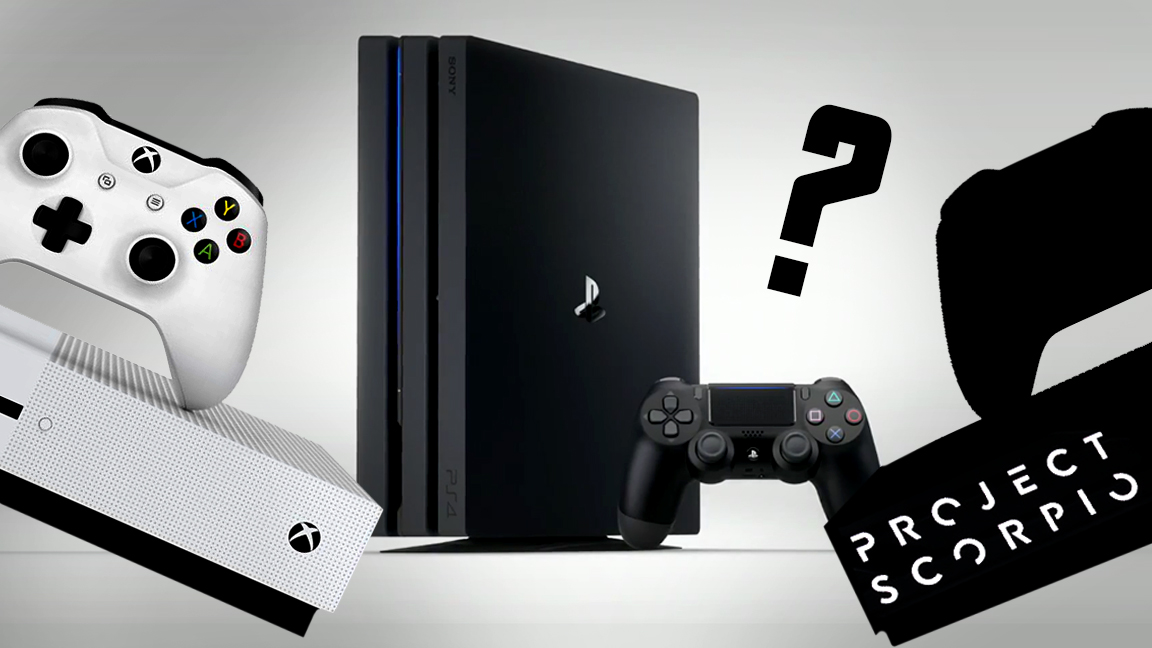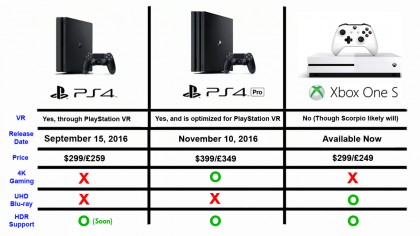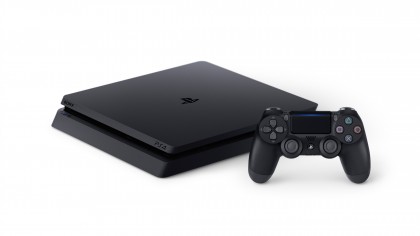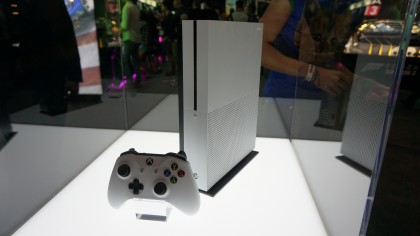Microsoft already has its answer to the PS4 Pro - it's called the Xbox One S
Opinion: Is Sony's new console ahead of the game - or is it just playing catch-up?

In case you missed the news yesterday, Sony announced the PS4 Pro. The shiny new console builds upon the original PS4 architecture, adding 4K resolution gaming, optimized specs for PlayStation VR, and smoother performance for past and future PS4 games.
The announcement of the PS4 Pro also marks the beginning of a new breed of console generation - one where companies make more iterative upgrades to their consoles over time rather than leap from one outdated hardware platform to something totally new.
Sony isn't alone in doing so. Microsoft picked up on this trend, too, having formally announced two of its own iterative upgrades to the Xbox One this summer at E3 2016 – Xbox One S and Project Scorpio, which promises to also bring 4K gaming, VR support, and silky-smooth framerates for the serious player.
Given that the PS4 Pro is but a couple months away from release while Project Scorpio over a year off, it would seem Sony got the jump on Microsoft in this new Mid-Console War. At least, so it appeared.
What Sony - and frankly, a lot of us - didn't see coming was the Xbox One S, which may seem underpowered at first glance, but offers just enough to give the PS4 Pro a run for its money.

Xbox One S(emi-Pro)
Microsoft's slimmed-down Xbox One, as it turns out, is much more than a slimmed-down Xbox One. The console's sleek design on the outside is matched with refined hardware on the inside, granting players HDR support, improved performance, 4K streaming, and Ultra High-Definition Blu-ray support.
That last tidbit is especially important because despite all of the PS4 Pro's pros, the supposed super-console, has a big con – it can't play your Blu-rays in 4K.
Get daily insight, inspiration and deals in your inbox
Sign up for breaking news, reviews, opinion, top tech deals, and more.
The Xbox One S puts the PS4 Pro in an awkward place by already offering a feature Sony's brand-new console can't – which is made even more awkward considering how much the PS4 Pro leaned into how big a deal 4K is when it was announced.
Sony also made a big deal about how HDR will flesh out the graphics of your favorite games, promising to bring HDR support to all PS4 models – even the three-year-old one you bought back in November 2013 – in a firmware update going live next week.
An impressive feature, undoubtedly, and it would've been another easy point for the Sony scoreboard ... had the Xbox One S not already debuted the feature on consoles back in August.
Also, the Xbox One S retails for $100/£100 less than the PS4 Pro, so that's another thing to consider, especially if you've already spent a pretty penny building up a movie library and don't feel like shelling out cash for both a console and UHD Blu-ray player.

Slim pickins'
"But what about that PS4 Slim that was also announced?" you say. "Surely it makes more sense to compare the Xbox One S to that, right?"
In theory, yes. The finally-confirmed PS4 Slim comes at around the same price as the Xbox One S while also refining the original console's design.
However, where the Xbox One S sports multiple changes to the original Xbox One's design, the PS4 Slim almost little to nothing new over the original minus its form factor.
Now, some might argue that's because the PS4 didn't really need revising – at least certainly not as much as Xbox One, which needed a return to the drawing board within seconds of its launch in 2013.
The Xbox One S not only cleaned up its exterior design – cutting about 40% of its size, ditching that brick of a power supply, and gaining the ability to sit up vertically – but also added new interior features in the form of the aforementioned UHD Blu-ray support, improved performance, 4K streaming, and game upscaling.

We're gonna need a bigger Pro
For this reason, I don't think Sony got the headstart it hoped it'd get with the PS4 Pro. Rather, Microsoft beat Sony's mid-generation machine to the punch over a month ago with its own revised Xbox One.
Does that mean I think the Xbox One S will beat out the PS4 Pro blow-for-blow? Of course not.
For example, the PS4 Pro still has the advantage of being built expressively with performance and true 4K gaming in mind, while the Xbox One S' performance enhancements over the original are minor, and it can only upscale 1080p games to 4K - not display them at a native 4K resolution.
So, if you're looking to test out your fancy 4K-ready entertainment centers, the PS4 Pro will be the way to go. Framerate junkies and those sold on PlayStation VR will also flock to the PS4 Pro thanks to its optimized CPU and GPU.
In short, the PS4 Pro still competes with the still-a-year-away Project Scorpio, which promises to match, if not surpass, the PS4 Pro in performance, on top of adding native 4K gaming and VR support of its own.
However, while framerates and performance reign supreme for many players, 4K and VR may not pan out in the Pro's favor as much as it intended – leaving room yet again for the Xbox One S to close in on Sony's tail.

4K(inda)
So here's the thing about native 4K gaming - it's only as good as the games that actually get made for it.
While the PS4 Pro promises to make older games "forward compatible" – upscaling them to look their best on 4K televisions, (just like the Xbox One S, how about that?) – it also promises to bring players a growing list of games fully optimized for the PS4 Pro's graphical abilities.
The good news? Big budget exclusives like Uncharted 4: A Thief's End and Horizon: Zero Dawn are going to look amazing on PS4 Pro.
The bad news? Developing games in native 4K is both demanding and expensive. Unless the game's production budget includes an extra chunk to vie for the highest resolution possible, it won't be taking full advantage of the Sony's hardware.
Same goes for PS VR – all the souped-up specs of the Pro won't mean much if the platform goes unsupported. If the virtual reality headset winds up going the way of PlayStation Move – or worse, Kinect – you're looking at a console that costs extra for little more than the better framerates and the occasional pretty game.

Project S(corpio)
We originally thought the PS4 Pro, back when it was codenamed the Neo, was solely comparable to the Project Scorpio – a competitor Sony had a year's worth of leg up on.
Now that the console is announced, it seems Microsoft threw a wrench in that plan by releasing the Xbox One S a month earlier – a console that not only is a major upgrade over the original Xbox One and comparable to the PS4 Pro, but even offers features Sony's unreleased machine lacks.
Add this with some of Microsoft's other plays in the book, such as last year's backwards compatibility update and this holiday's merger with PC gaming thanks to Xbox Play Anywhere, and the Xbox architecture is starting to gain some serious traction.
We don't know much about what's in store for Project Scorpio, but unless Sony commits to the PS4 Pro and puts all its weight behind it, it seems the Xbox One S successor won't have much catching-up to do.
